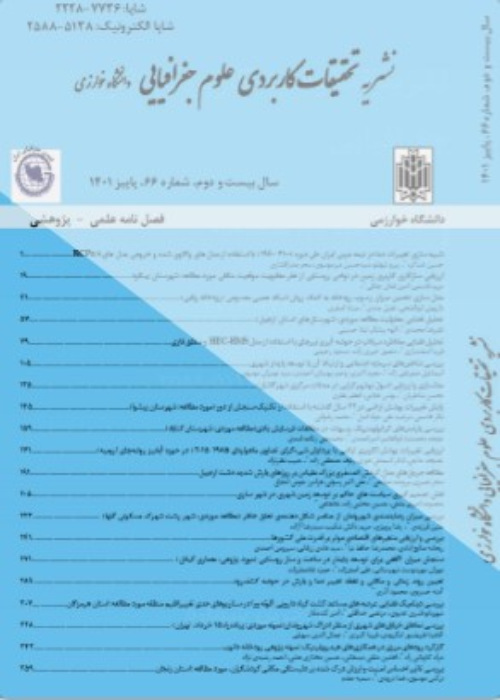Comparison of methods based pixel classification, object-based and decision tree in forest type mapping using remote sensing data (Case study: Forest Astara)
Author(s):
Abstract:
Accurate Forest type maps over large areas are important to construct an optimal decision support tool for forest ecosystems management. Recently, digital classification of remotely sensed data has been increasingly used as a suitable replacement to produce these maps. The obtained results are different based on the classification methods, forest covers, study area conditions and satellite data. This research utilizes data from SPOT5 images to compare the results of pixel-based, object-oriented and decision tree classification methods for mapping forest types in the Astara forests located in the northern parts of Iran. To obtain the field information, we chose a random systematic sampling aapproach, where 153 plots of 1 hectare were sampled. Forest type in each plot was identified based on the percent of frequency of different species including the mixed Parrotia, mixed hardwood, mixed Carpinus, mixed Fagus and protected lands. In order to map these forest types, we used a pixel-based neural network classifier method. Forest types could be classified using spectral data with an overall accuracy of 52.04% and a kappa coefficient of 0.39. In addition to the pixel-based approach, the object-oriented classification method consisting of segmentation of image data into the primary objects and employment of the Nearest neighbor and membership functions was used for classication. The overall accuracy and kappa coefficient of classification reached 63.3% and 0.54 respectivelly by using the spectral data alone, Results of the accuracy assessment showed that, the performance of the object-oriented method for discrimination of forest types is considerably better than the pixel-based method. Spectral signatures of forest types showed overlaps and most of them were porrly separable in the feature space provided by remotely sensed data. Therefore, to improve discrimination of forest types. We used a texture measure and ancillary data such as DEM, slope. Aspect and distance to stream data which could be effective for mapping spatial occurrence of mixed forest types. Integration of the ancillary data with spectral data in a decision tree classifier resulted in the improvement of the classification results. In this process, overall accuracy of 76.5% and a kappa coefficient of 0.7 were obtained and DEM was the most useful layer for forest type separation and Comparison in the results of pixel-based and object-oriented classification methods showed that the object-oriented method has higher capabilities for classifying forest types. Also, higher accuracies could be achieved for separation of mixed forest types by the decision tree classifier.
Language:
Persian
Published:
Journal of Applied Researches in Geographical Sciences, Volume:9 Issue: 13, 2009
Page:
7
magiran.com/p876557
دانلود و مطالعه متن این مقاله با یکی از روشهای زیر امکان پذیر است:
اشتراک شخصی
با عضویت و پرداخت آنلاین حق اشتراک یکساله به مبلغ 1,390,000ريال میتوانید 70 عنوان مطلب دانلود کنید!
اشتراک سازمانی
به کتابخانه دانشگاه یا محل کار خود پیشنهاد کنید تا اشتراک سازمانی این پایگاه را برای دسترسی نامحدود همه کاربران به متن مطالب تهیه نمایند!
توجه!
- حق عضویت دریافتی صرف حمایت از نشریات عضو و نگهداری، تکمیل و توسعه مگیران میشود.
- پرداخت حق اشتراک و دانلود مقالات اجازه بازنشر آن در سایر رسانههای چاپی و دیجیتال را به کاربر نمیدهد.
In order to view content subscription is required
Personal subscription
Subscribe magiran.com for 70 € euros via PayPal and download 70 articles during a year.
Organization subscription
Please contact us to subscribe your university or library for unlimited access!


